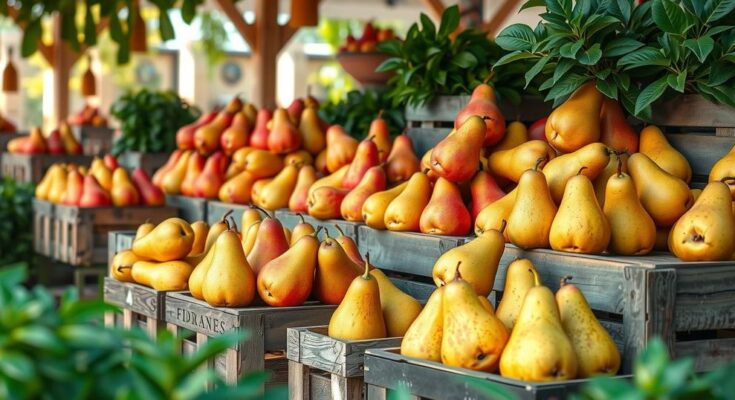The Argentine pear industry in 2024 saw favorable beginnings amidst a backdrop of rising costs and inflation. The country leads the global pear market, especially in Europe, but faces challenges due to shifting consumer preferences and internal tensions. Production exceeded expectations, yet significant quantities were lost, raising concerns about market stability for the upcoming season.
As the 2025 Argentine pear season commences, agronomic engineer Betina Ernst, who is also the president of Top Info Marketing S.A., provided an analysis of the 2024 season and insights for the upcoming year. Argentina remains the foremost exporter of pears to Europe, commanding a 48% market share, followed by South Africa at 37% and Chile at 15%.
The Argentine pear industry experienced a strong start in 2024, benefiting from a favorable exchange rate instigated by the new government. Betina Ernst remarked, “When Javier Milei’s government took office, inflation was running at 20% per month. Many exporters rushed shipments because they knew they were in a favorable position.” However, the stabilization of exchange rates was accompanied by rising domestic costs attributed to ongoing inflation.
High internal costs, primarily due to an intricate labor system and tax burdens, have long plagued the industry. Ernst stressed the need for a reduction in these expenses to enhance the sector’s efficiency. Tensions between producers and exporters were palpable last season as financial struggles affected timely payments to producers.
Production levels surpassed expectations, resulting in substantial pear storage. Ernst noted that excess fruit was either processed or discarded, indicating significant losses within the industry. The key markets for Argentine pears include Brazil, Russia, the United States, and Europe, but the country has faced challenges in maintaining market share, particularly in Europe where consumer preferences have shifted.
Ernst highlighted that the main varietal, Williams, is losing popularity among European consumers, which has been detrimental to Argentina’s presence in that market. She mentioned that the Latin American market remains crucial for both Argentina and Chile, while South Africa directs its exports primarily towards Europe and Asia.
Looking ahead, Ernst anticipates Argentina’s market share to remain steady, noting that Chile may concentrate more on the U.S. market this season due to limited domestic production. She concluded with insights on pricing, indicating stability in U.S. markets while European prices, which began high, have significantly decreased despite an initially low local supply.
In summary, the 2024 season for Argentine pears faced a series of challenges, including rising internal costs and market share losses, particularly in Europe. While production exceeded expectations, high storage levels resulted in considerable waste. However, the industry maintains strategic importance in several key markets, and there is a cautious optimism for continued stability in the upcoming season.
Original Source: www.freshfruitportal.com




